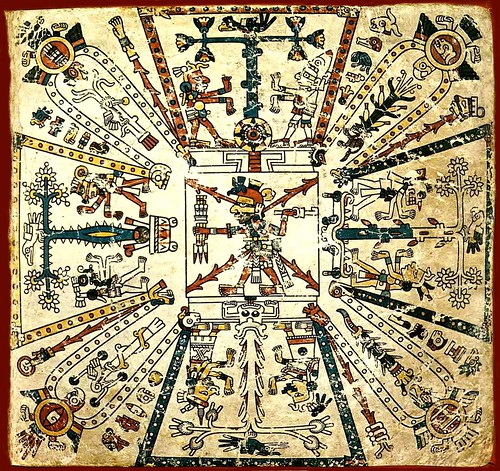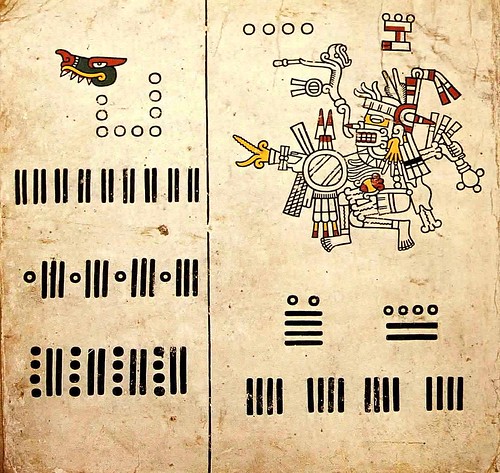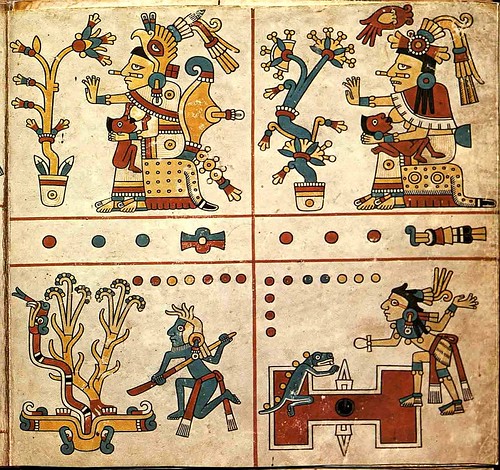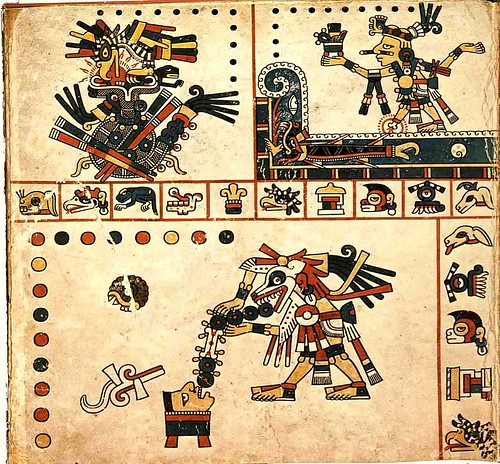
The Codex Fejérváry-Mayer depicts specific aspects of the tonalpohualli the 260-day Mesoamerican augural cycle. The painted manuscript divides the world into five parts. T-shaped trees delineate compass points: east at the top, west on the bottom, north on the left, and south on the right. The four directions are distributed around a sacred center, shown here as Xiuhtecuhlti, the god of fire.

"(a)The center; (b)the four world trees; (c)the body of Tezcatlipoca, the creator God (his dismembered parts - spine, head, foot, and hand - are seen at the interstices of the four quadrants); and (d)circular cartouches of year signs set on the framing Maltese Cross."
[Diagram and notes © 'The History of Cartography, Volume 2, Book 3: Cartography in the Traditional African, American, Arctic, Australian, and Pacific Societies', 1998, edited by G Woodward and GM Lewis - googlebooks]









The top right corner of this image "shows how Tezcatlipoca tempted Cipactli the Earth Monster to the surface of the great waters by using his foot as bait. In swallowing his foot (s)he lost her lower jaw. Hideously crippled (s)he was unable to sink and thus the earth was created from her body." [source]




Codex Fejérváry-Mayer is a 15th or early 16th century Aztec (or Mixtec) manuscript on deer skin from Veracruz in central Mexico. Named for a Hungarian collector and British patron, this pre-Columbian accordion-style document outlines the cosmological and calendrical orientations of the Mayan people. As a typical calendar codex tonalamatl dealing with the sacred Aztec calendar -- the tonalpohualli -- it is grouped in the Codex Borgia group.
- Except where stated, all the Codex Fejérváry-Mayer images above come from FAMSI (Foundation for the Advancement of Mesoamerian Studies) [another version]. There are forty four page images in total. The sprawling FAMSI site is a worthwhile timesink)
- Brief overview of Aztec codices.
- Codex Fejérváry-Mayer is owned by the Museum of Liverpool.
- Adeva in Austria sell a facsimile edition of the codex.
- See also: previous posts on Mesoamerica. [via]
No comments:
Post a Comment